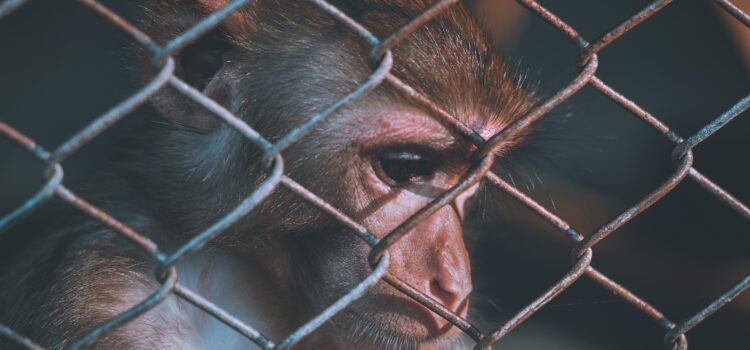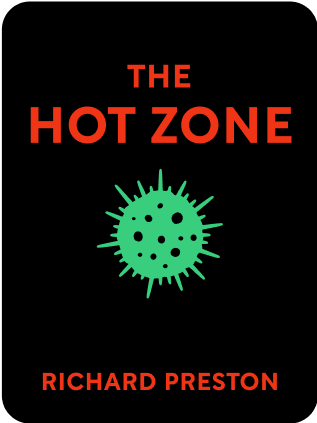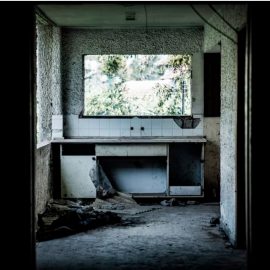

This article is an excerpt from the Shortform summary of "The Hot Zone" by Richard Preston. Shortform has the world's best summaries of books you should be reading.
Like this article? Sign up for a free trial here .
Who is Dan Dalgard? What was his role in containing the Ebola outbreak at the Reston monkey house?
Dan Dalgard was a consulting veterinarian at the holding facility where the Ebola outbreak fo 1989 took place. Dalgard helped sound the alarm, and later handled the outbreak.
Read more about Dan Dalgard, and his role in containing and researching the Reston Ebola outbreak.
Dan Dalgard and the Mystery Disease at the Reston Facility
The monkey colony manager, Bill Volt, considered the fact that the building’s air system was broken, and the heat was running high. The relentless heat could have put a strain on the monkeys and caused the deaths—but that didn’t explain why most of the deaths had been in just one room, Room F. Volt called Hazleton’s consulting veterinarian, Dan Dalgard, to take a look at the monkeys.
When Dalgard inspected the remaining monkeys in Room F, he found two that were sick and feverish. Both died that night, and when Volt and Dalgard dissected the monkey corpses the next day, they found that the monkeys’ spleens were swollen and there was blood in their intestines.
More monkeys in Room F died and Dalgard continued to investigate. None of the monkeys seemed terribly ill, besides having enlarged, tough spleens. However, Dalgard didn’t recognize that their spleens weren’t simply swollen—they had actually become solid blood clots.
Dalgard removed a piece of spleen and collected a throat swab from one of the dead monkeys, and he sent it to Peter Jahrling, a civilian virologist at USAMRIID. Dalgard believed the disease killing these monkeys was simian hemorrhagic fever (SHF), which was fatal for monkeys but didn’t affect humans. After some testing, Jahrling tentatively agreed.
When Dalgard got the verdict from USAMRIID, he killed the rest of the monkeys in Room F, in order to stop the disease from spreading to monkeys in other rooms.
A few days later, Dalgard returned to the Reston facility to find that five monkeys had died in a room two doors down from Room F. This was alarming: Not only was the disease spreading, but it could skip rooms, suggesting it could be airborne.
Jahrling and Geisbert Sound the Alarm
Jahrling alerted Colonel Clarence Peters, the chief of USAMRIID’s disease-assessment division. Peters, Jahrling, and Geisbert considered the possibilities:
- Could these samples have been contaminated by another hot agent in USAMRIID’s lab, meaning the virus hadn’t been in the monkeys at Reston?
- If a Marburg-like virus was at Reston, could Dalgard be infected?
Peters was alarmed but cautious. Announcing that Marburg or Ebola had appeared in a Virginia suburb outside Washington, DC would cause panic, so they had to be 100 percent positive. Geisberg collected more samples from the monkey liver, and he captured electron-microscope photos that convinced Peters that it was, indeed, a filovirus.
Now they needed to determine whether the virus was Marburg or Ebola. While they waited for the test results, Jahrling called Dan Dalgard to warn him to be careful, though he didn’t reveal many details. Dalgard had dissected 50 potentially infected monkeys 11 days prior, and he still showed no symptoms—but he worried about the other employees in the monkey house.
The Army Informs Dalgard
Peters called Hazleton veterinarian Dan Dalgard to let him know what they were dealing with. Dalgard was relieved to find out the virus wasn’t Marburg, which is well known and feared among professionals who work with monkeys. Dalgard had never heard of Ebola, but when Peters told him Ebola’s kill rate, he understood he was dealing with something even worse than Marburg.
Dalgard needed to loop in his superiors at Hazleton, who were unaware that a monkey-killing virus was spreading through the Reston facility. Dalgard worried that he’d made a mistake by involving the Army in the first place, who now wanted to visit the monkey house and view samples from the dead monkeys—he didn’t want his decision to anger company leaders or hurt business. Dalgard hesitated to give them permission, and instead he suggested they talk again in the morning.
As Dalgard considered the situation, he was more concerned by the prospect of the Army muscling its way into Reston than by the threat of Ebola. He knew Ebola’s kill rate, but he’d been exposed to the infected monkeys’ blood and still felt fine.
The Threat of Ebola Intensifies
The next morning, Dan Dalgard spoke to Peters and agreed to let Johnson, Jaax, and Peters inspect the tissues of the monkey carcasses—but Dalgard was still hesitant to let them into the monkey house.
Then Dalgard called Volt, the monkey colony manager, to tell him about the Army’s findings. Volt told Dalgard that one of the animal caretakers in the monkey house—who is identified as Jarvis Purdy—had suffered a heart attack. Purdy was at the hospital, and he might be dying. Suddenly, the threat became real to Dalgard: Purdy could be infected with Ebola, and the virus could infect and kill others, as well.
Dalgard instructed Volt to suspend all activity in the monkey rooms besides feeding, cleaning, and observation—and those tasks had to be done in full biohazard gear.
Infected Monkey Samples Cause More Confusion
Soon after, Johnson, Jaax, and Peters arrived at Dan Dalgard’s office. Jaax viewed a sample from one of the dead monkeys under a microscope, and she saw that the cells looked like bricks that were bursting with replicated virus particles, a signature sign of Ebola.
The Army officials wanted more samples, so Dalgard had Volt give them the carcasses of several monkeys that had died the night before.
Jaax, Johnson, and Peters transported the infected carcasses to USAMRIID, where Jaax took them into the Level 4 hot zone to dissect. When she cut into the first one, she found:
- Eyes that were not red (red eyes would have been a telling symptom of a filovirus)
- An enlarged, leathery spleen
- Some bleeding spots where the stomach met the small intestine
Some of the characteristics looked like Ebola, but it was far from a dead ringer—the organs hadn’t liquified and there was little to no hemorrhaging. Jaax couldn’t confirm that they were dealing with Ebola based on this carcass. She’d need more samples.
Army Officials Prepare for the Reston Sterilization Mission
Dan Dalgard decided to allow the Army into the monkey house to clear out one of the rooms.
Peters tapped Nancy Jaax’s husband, Colonel Jerry Jaax, to lead the mission into the Reston facility. Jerry Jaax was the chief of USAMRIID’s veterinary division. Although he had no experience with extreme biohazard agents, he and his team knew well how to handle monkeys.
Jerry Jaax conferred with Johnson about how to approach the mission. They’d have to be extremely careful while sterilizing Reston to prevent the virus from escaping and spreading.
The priorities of the mission were threefold:
- Prevent the virus from infecting humans.
- Euthanize the monkeys as quickly and painlessly as possible.
- Collect samples for research on the virus and its transmission.

———End of Preview———
Like what you just read? Read the rest of the world's best summary of Richard Preston's "The Hot Zone" at Shortform .
Here's what you'll find in our full The Hot Zone summary :
- The many different strains of Ebola, including the deadliest kind with a kill rate of 90%
- How scientists unraveled the mystery of a new strain of Ebola
- How Ebola could become airborne, becoming one of the deadliest viruses known






